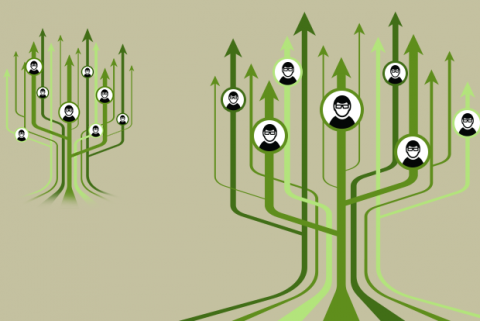Innovation is one of those words that can be used in multiple ways. Sure, it can mean something that changes the world over night, and that's how many people would define it. But in the day-to-day reality for IT leaders, innovation is ongoing.
It's small tweaks here and there that add up to eventual paradigm shifts, changing the way people in the organization think, how they work with each other, and how they measure their success. It means operating like a business within the larger organization — a go-to in-house expert resource that can demonstrate when, why and how to use technology to improve the everyday workflow. You don't have to change the world or bring something new and ground breaking to market. Innovation can be as simple as going from one place to a better place.
This is a good reminder in a day and age when all companies in all industries are feeling the pressure to innovate. Technology is changing our lives at a breakneck pace. We don't buy things the same way we did ten years ago, when, for example, Best Buy would meet all of our electronics needs. Today we still like to go to Best Buy and other brick and mortar retail stores to touch and feel things, but then many of us go back home, order from Amazon or another online provider, and wait for them to come to our door. In some cases we do not even make the trip to the Best Buys of the world and simply shop for technology based upon recommendations and reviews without ever seeing the real product first.
Similarly, we don't consume entertainment the same way we did even five years ago. Smart TVs are now in more broadband households than not. And their rapid acceleration in popularity and availability along with services such as NetFlix have not only contributed to wiping out Blockbuster Videos, but led to a widespread behavioral shift in how we access media. The cable TV industry is aware of this shift and are using legislative measure to protect their domain.
With so many examples of digital transformation in our daily lives, it is next to impossible for IT leaders to ignore that change is inevitable. At Coastal Federal Credit Union, we are often more focused on making incremental changes – not one big innovation or breakthrough – to take our services from great to even better.
One example of this is our service hours. We realized that we don’t have to have staff at every branch every day to be successful. We implemented audio video banking technology to support a shift in business hours. This shift coincided with the expansion of our use of personal teller machines that took our hours from 8 a.m. to 5 p.m. Monday through Friday, to 7 a.m. to 7 p.m. seven days a week. We needed to meet the increasing demand from our customers, who expect to bank on their own time, but we couldn't afford to staff every one of our branches with our new extended hours. So, we implemented technology and flexible work schedules to provide better member service.
With this relatively small change, we experienced a new level of transparency within the organization, and specifically, within IT. Because we collectively work longer hours, we are operating in more of an “always-on” environment. And, ultimately, we are able to detect and notify senior managers of potential issues and fix them before they become problems. So, while flexible schedule are nothing new or groundbreaking, this change ended up being innovative for our IT organization and member service.
Ultimately, it's this mentality and passionate individuals who continually seek out new ways to improve the business with technology that will enable a company to innovate on an ongoing basis.
Scott Stevens is Vice President of Information Technology at Coastal Federal Credit Union.




